COOPERATION MODEL
ARTIFICIAL INTELLIGENCE
PRODUCT ENGINEERING
DevOps & Cloud
LOW-CODE/NO-CODE DEVELOPMENT
INDUSTRY
FRONTEND DEVELOPMENT
CLOUD DEVELOPMENT
MOBILE APP DEVELOPMENT
LOW CODE/ NO CODE DEVELOPMENT
EMERGING TECHNOLOGIES







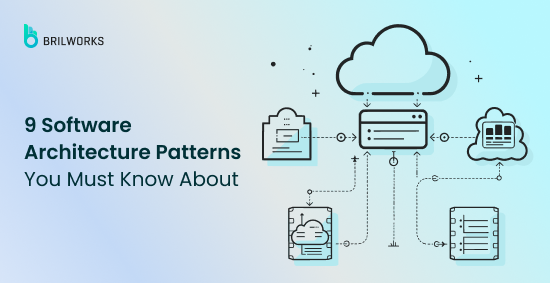
Software architecture patterns are essential for building scalable, maintainable, and testable software applications.
There are numerous patterns available, each addressing specific challenges. By reusing code and optimizing resource utilization, these patterns offer significant benefits. For instance, a popular microservice architecture breaks down applications into smaller, independent services that communicate via APIs. This modular approach ensures that a failure in one service doesn't disrupt the entire application, making it crucial for round-the-clock operations.
Another example is the Model-View-Controller (MVC) pattern, which separates concerns and improves application maintainability. However, no single software architecture pattern is perfect, so understanding various options is vital for selecting the best approach for your next project.
It's important to differentiate between software architecture patterns and design patterns, although they are interrelated. Let's quickly compare these two concepts before exploring popular software architecture patterns.
Architecture patterns and design patterns are often used interchangeably, but they serve distinct purposes in software development. To understand the difference between them, let's consider building a house.
The architectural pattern defines the structure, layout, and foundation. It dictates how the system is organized, such as using a microservices or layered architecture.
Design patterns, on the other hand, focuss on specific implementation details within the architectural framework. For example; it may include the Singleton pattern for creating a single instance of a class or the Observer pattern for notifying multiple objects of changes. In simple words, design patterns address recurring design problems and provide reusable solutions.
|
Feature |
Software Architecture Patterns |
Design Patterns |
|
Scope |
System-wide structure and organization |
Specific components or interactions within a system |
|
Level of Abstraction |
High-level |
Low-level |
|
Focus |
Scalability, maintainability, performance |
Code reusability, flexibility, maintainability |
|
Purpose |
Provides a blueprint for the entire system |
Offers reusable solutions to common design problems |
|
Examples |
Microservices, Event-driven architecture, Layered architecture |
Singleton, Factory, Observer, Strategy |
|
Relationship |
Design patterns can be used to implement components within architecture patterns |
Architecture patterns provide the overall framework for using design patterns |
|
Granularity |
Broader and more abstract |
Finer-grained and more concrete |
|
Decision Making |
Influences high-level design choices |
Guides low-level implementation decisions |
|
Impact |
Affects the overall system structure and behavior |
Affects the internal structure and behavior of specific components |
|
Timing |
Typically defined early in the development process |
Can be applied throughout the development process |
|
Flexibility |
May be less flexible to change after implementation |
Can be more flexible to adapt to changing requirements |
|
Complexity |
Often more complex to understand and implement |
Generally less complex than architecture patterns |
|
Trade-offs |
Involve trade-offs between various factors (e.g., performance, scalability, maintainability) |
Involve trade-offs between different design goals |
|
Tools |
May involve architectural modeling tools |
Often implemented using programming language constructs and libraries |
|
Expertise |
Requires a deep understanding of system design principles |
Requires a strong understanding of object-oriented programming and design principles |
In this article, we will discuss some popular software architecture patterns and provide you with what benefits each program offers.
Let’s discuss a few popular architectural patterns that have helped a lot of software businesses to scale up their businesses:

Multi-layered architecture is a popular design pattern that organizes software into different layers, each responsible for specific functionalities. This hierarchical structure promotes modularity, making development and maintenance more efficient.
Common layers include presentation, business logic, data access, and database. However, the number and specific names of layers can vary depending on the application's requirements. Frameworks like Java EE often utilize this pattern.
In larger applications, each layer serves a different purpose. For example, the presentation layer handles user interface and interaction, while the business logic layer implements core application functionality. Smaller applications may combine layers to simplify the architecture.
A key benefit of multi-layered architecture is its isolation. Changes to one layer typically do not affect other layers, reducing the risk of unintended side effects. This isolation also enables easier scaling and maintenance.
Consider an e-commerce application. When a user adds an item to their cart, the presentation layer sends a request to the business logic layer. This layer calculates the total cost and updates the cart. The business logic layer then interacts with the data access layer to persist the changes to the database. This layered approach ensures clear separation of concerns and efficient data management.
For rapid application development, its modular structure can accelerate development time.
For enterprise applications, as it aligns with traditional IT infrastructure and processes.
Great fit for teams with limited architectural knowledge,
For maintainable and testable applications, as the the layered approach enhances code organization and testability.
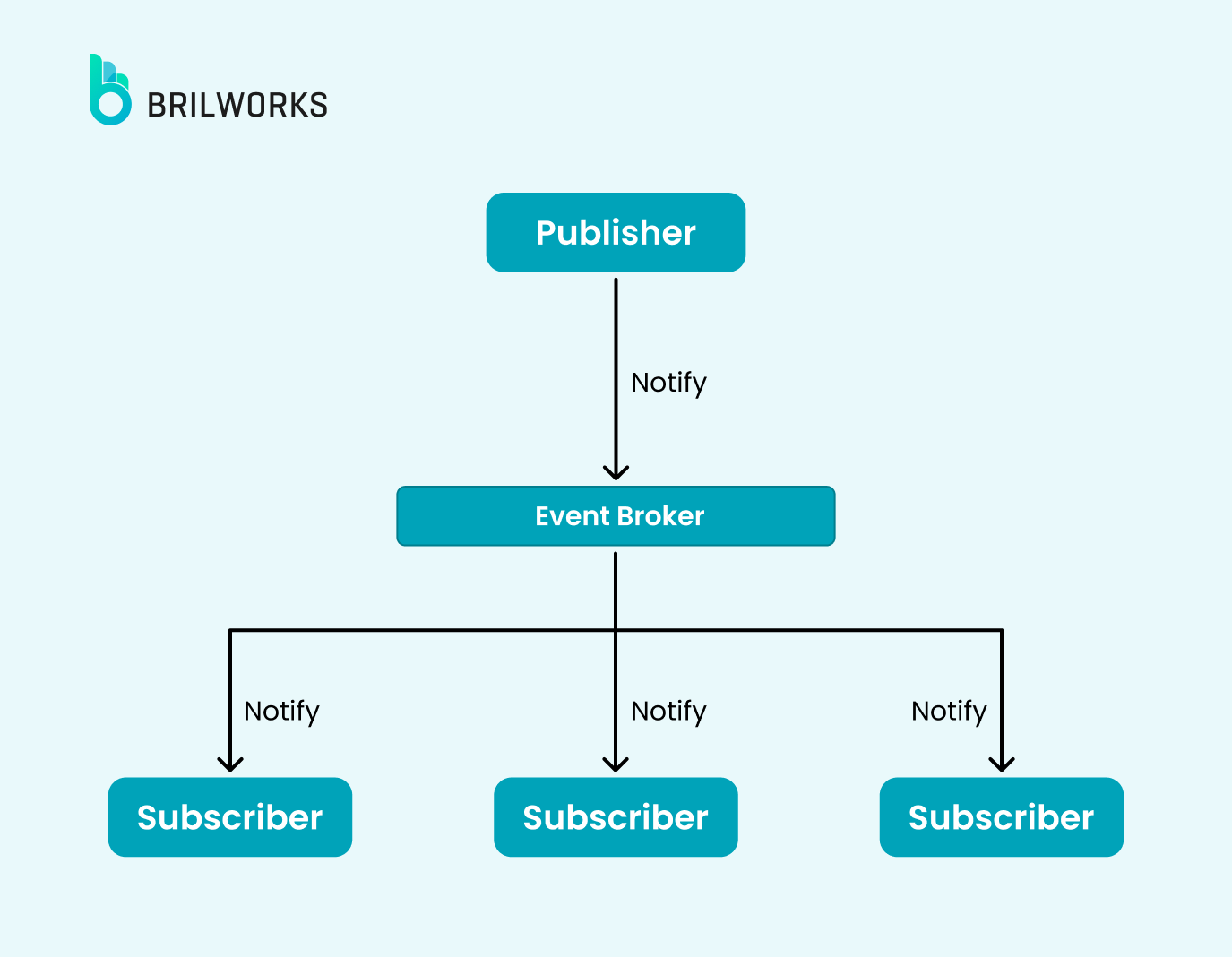
Event-driven architecture is a design pattern that excels in agility and performance. It consists of loosely coupled components that communicate asynchronously through events. This architecture is ideal for applications that need to handle high volumes of data and complex workflows.
There are two main topologies: mediator and broker. A mediator acts as a central hub, orchestrating event flow. A broker, on the other hand, allows events to be chained together without a central intermediary.
We can understand this architecture with an e-commerce website, a common example of an event-driven architecture. When a customer adds an item to their cart, an event is generated. This event can trigger various actions, such as updating the cart total, sending a notification, or reserving inventory.
Key components of an event-driven architecture include event producers, event routers, and event consumers. Producers generate events, routers filter and distribute them, and consumers process the events. This decoupling enables independent scaling and updates of services.
Process and analyze large volumes of data in real-time, such as financial market data, IoT sensor readings, or social media feeds.
IoT devices generate a continuous stream of events that can be processed and analyzed using EDA to provide real-time insights and actions.
Create dynamic and responsive gaming experiences, handling player actions, game events, and environmental changes in real-time.
EDA is used for processing transactions, detecting fraud, and triggering alerts in real-time financial applications.
It can be used to track inventory levels, monitor shipments, and respond to supply chain disruptions in real time.
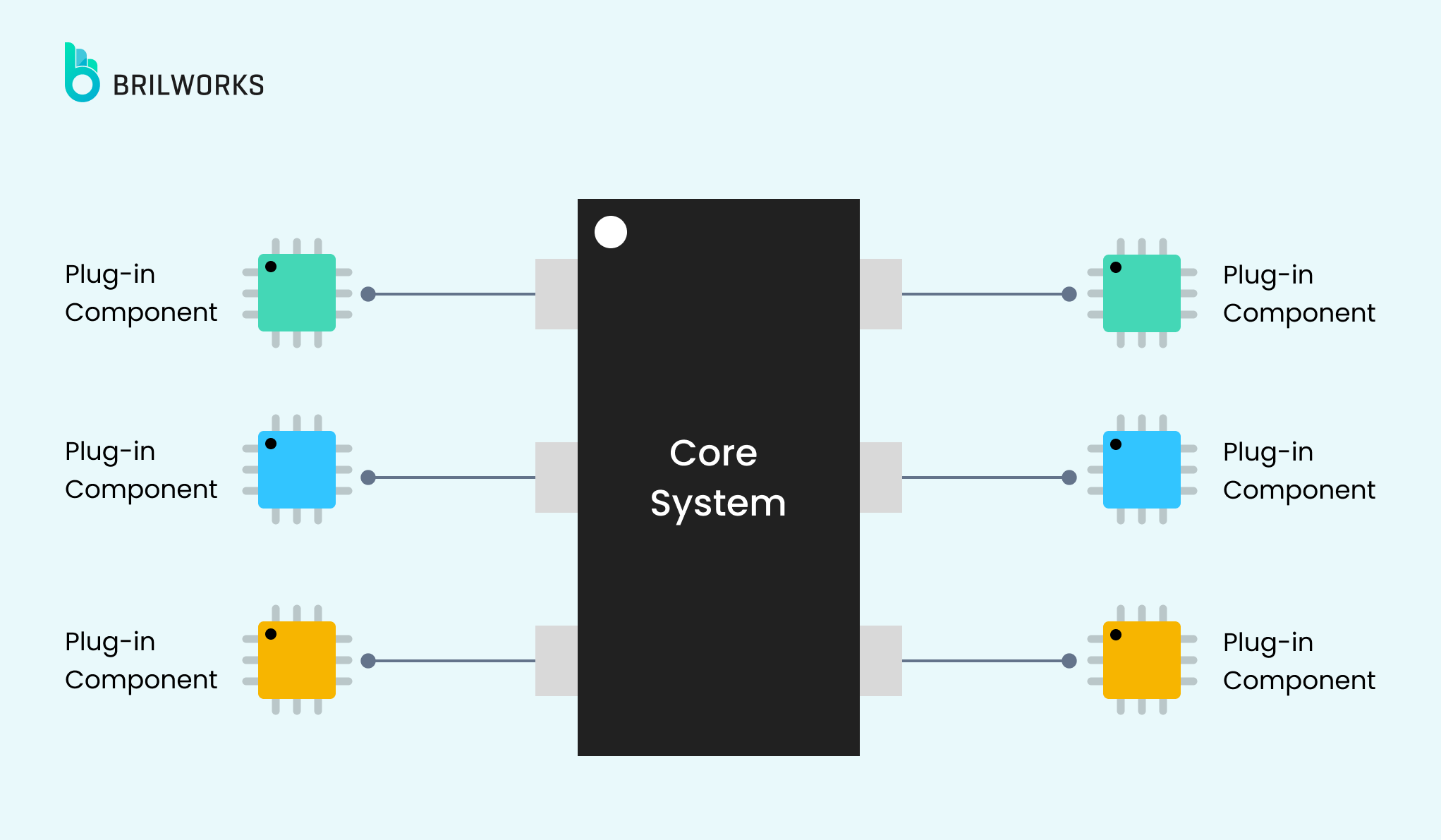
Microkernel Architecture is a design pattern that separates a system into two main components: a core system and plug-in modules. The core system provides fundamental functionalities essential for the system's operation, while plug-in modules are independent components with specialized processing capabilities.
In the context of a business application, the core system can be likened to the general business logic, excluding custom code for specific scenarios, rules, or complex conditional processes. Plug-in modules, on the other hand, extend the core system to deliver additional business functionalities.
Consider a task scheduler application as an example. The microkernel encompasses the core logic for scheduling and triggering tasks, whereas plug-ins represent specific tasks to be executed. As long as these plug-ins adhere to a predefined interface, the microkernel can initiate them without needing to understand their internal implementation details.
This architectural pattern effectively isolates core functionality from optional features, enabling highly extensible applications through plug-ins. It is particularly well-suited for software that requires frequent feature additions or modifications, as new functionalities can be easily integrated without affecting the core system.
Microkernels are often used as the foundation for operating systems, as they provide a minimal and secure environment for running applications. Examples include QNX, Mach, and L4.
Microkernels are well-suited for embedded systems due to their small size and low resource requirements. They can be used in devices such as smartphones, automotive systems, and industrial controllers.
Microkernels can be designed to meet the stringent timing requirements of real-time systems, as they minimize the overhead of system calls and interrupts.
Microkernels can be used to create highly secure systems by isolating critical components from untrusted processes. This is particularly important in environments where security is a top priority, such as military and financial applications.
Microkernels can be used to build distributed systems, as they allow for flexible and modular communication between different components.
Microkernels can be used to implement virtualization platforms, as they provide a secure and efficient environment for running multiple guest operating systems.
Microkernels are often used in cloud computing environments to provide a scalable and flexible infrastructure for running applications.
Microkernels can be used to control robots, as they provide a reliable and efficient platform for running real-time algorithms and coordinating different sensors and actuators.
Microkernels can be used in IoT devices to provide a secure and efficient platform for running applications and communicating with other devices.

The Blackboard pattern is a versatile software design framework that facilitates the collaborative problem-solving of complex tasks. It operates by employing three primary components: a shared information repository known as the Blackboard, a collection of independent algorithms or agents that process information and contribute their findings to the Blackboard, and a set of modules that utilize the information on the Blackboard to update the system's state or make decisions.
In the context of robotics, this pattern proves particularly valuable. Consider a robot equipped with two cameras, one observing a table and the other focusing on a target area. Each camera's vision algorithms can function autonomously, posting their respective results to the Blackboard. This allows a central module to effortlessly access the current state whenever necessary, without requiring knowledge of the specific methods used by the cameras to extract features or even the existence of the cameras themselves.
By enabling specialized agents to contribute to a shared knowledge base, the Blackboard pattern fosters effective collaboration and problem-solving, making it a cornerstone of many AI systems.
In expert systems, multiple knowledge sources can contribute to solving a problem by posting and modifying data on a shared blackboard. This allows for flexible and adaptable problem-solving.
Blackboard patterns can be used to coordinate the actions of multiple sensors and actuators in real-time control systems, ensuring that the system behaves as expected.
In natural language processing, multiple components can use a blackboard to share information and knowledge, enabling more accurate and robust language understanding.
Blackboard patterns can be used to combine the results of multiple image processing algorithms, improving the accuracy and reliability of image analysis tasks.
In design automation, multiple design tools can use a blackboard to share design data and constraints, facilitating the creation of complex designs.
Blackboard patterns can be used to coordinate the activities of multiple agents or components in planning and scheduling problems, ensuring that tasks are completed efficiently.
Blackboard patterns can be used to facilitate collaborative problem-solving among humans and machines, enabling more effective and innovative solutions.

A monolithic architecture is a traditional approach where all components of an application are tightly coupled within a single codebase, deployed as a unified unit. While less common today, it's still found in legacy systems. In contrast, a microservices architecture is a collection of smaller, independently deployable services. The best choice depends on various factors.
Monoliths offer simplicity for early-stage projects, simplifying code management, reducing cognitive overhead, and streamlining deployment. However, as applications grow, they can become cumbersome to maintain and update. Changes to any part of the monolithic codebase require rebuilding and redeploying the entire application, making updates time-consuming and restrictive.
For smaller projects, a monolithic architecture can be simpler and more efficient to develop and maintain.
Monoliths can be quickly developed for initial prototypes, allowing for early testing and feedback.
Many existing systems are monoliths, and migrating them to a microservices architecture can be a significant undertaking.
Deploying a monolithic application can be relatively straightforward compared to microservices.
Monoliths can efficiently utilize shared resources like databases and caches.
Centralized Management: All components of a monolithic application are managed centrally, making it easier to oversee.
Debugging can be simpler in a monolithic architecture due to a single codebase.
Performance optimizations can be applied to the entire application at once.
Implementing security measures can be more centralized in a monolithic environment.
Smaller teams might find it easier to coordinate development and maintenance of a monolithic application.
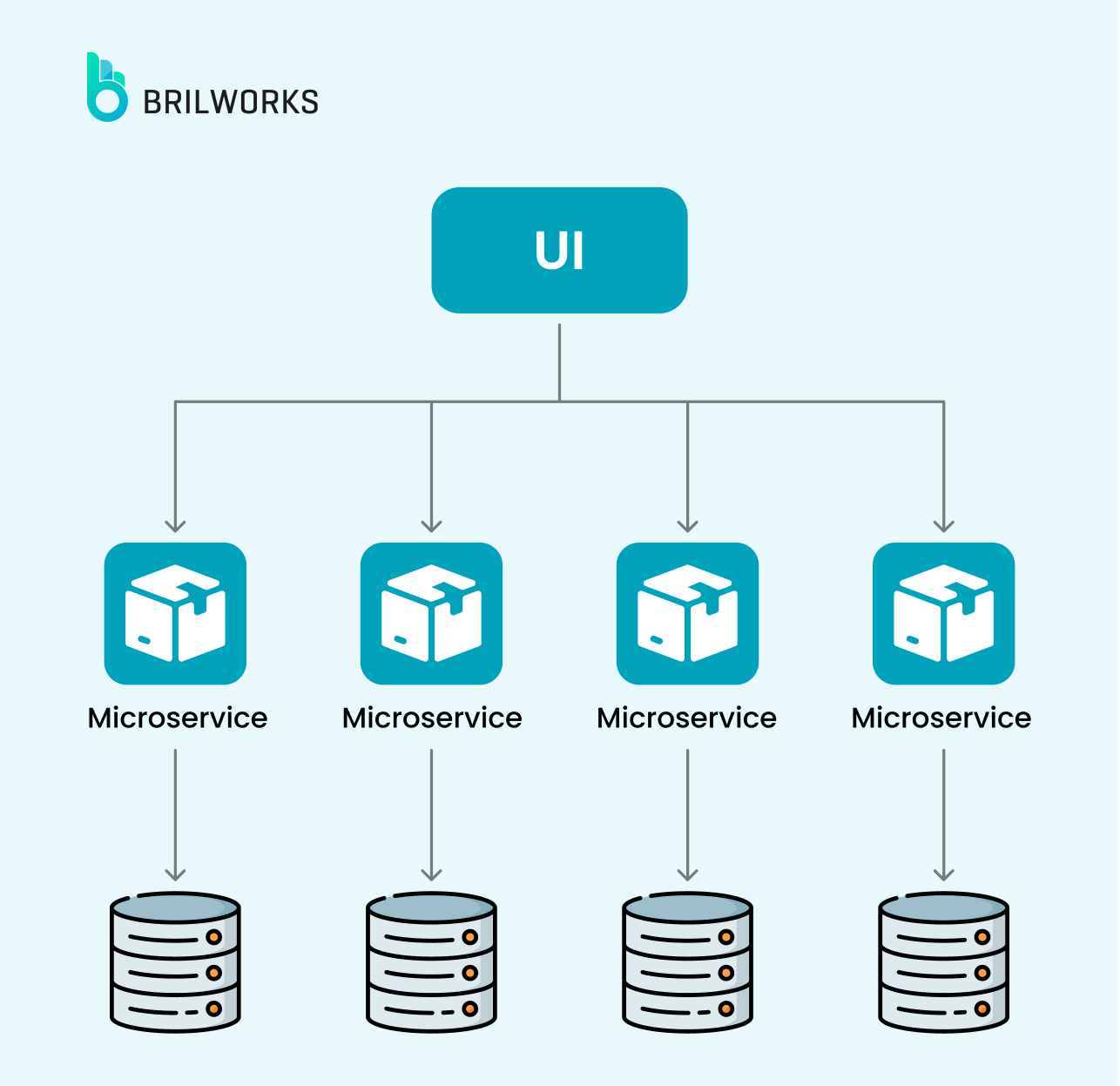
Microservices architecture is a design approach that divides applications into smaller, independent components called microservices. Unlike monolithic applications, where the entire application is a single unit, microservices allow for flexible development, deployment, and scaling. Each microservice has its own responsibilities and can be developed, tested, and deployed independently, promoting agility and reducing dependencies.
A key benefit of microservices is scalability. Individual services can be scaled up or down as needed to handle varying workloads, ensuring optimal performance. Additionally, the decoupling of services enables teams to work independently on different parts of the application, accelerating development and reducing time-to-market.
Netflix is a prominent example of a company that has successfully adopted microservices. By breaking down their application into hundreds of smaller services, Netflix's engineering teams can work in parallel, delivering new features and improvements at a rapid pace.
Containers are a popular technology for implementing microservices. They provide a lightweight, portable environment for packaging and running applications, isolating them from underlying infrastructure and simplifying deployment. Google Kubernetes Engine is a powerful platform that helps manage and orchestrate microservices-based applications, making it easier to deploy, scale, and monitor your services
Microservices allow individual components to be scaled independently, improving performance and resource utilization.
If one microservice fails, the others can continue to operate, ensuring system availability.
Different microservices can use different technologies and frameworks, providing flexibility in development choices.
Microservices enable faster and more frequent deployments, accelerating development cycles.
Microservices break down large applications into smaller, more manageable components, improving code organization and maintainability.
Independent teams can develop and manage individual microservices, promoting faster development and innovation.
Failures in one microservice are contained, preventing them from affecting the entire system.
Microservices architecture allows for easier integration of third-party services and APIs.
New features or technologies can be tested in isolation within a microservice, reducing risk.
Microservices are well-suited for handling complex, large-scale applications.
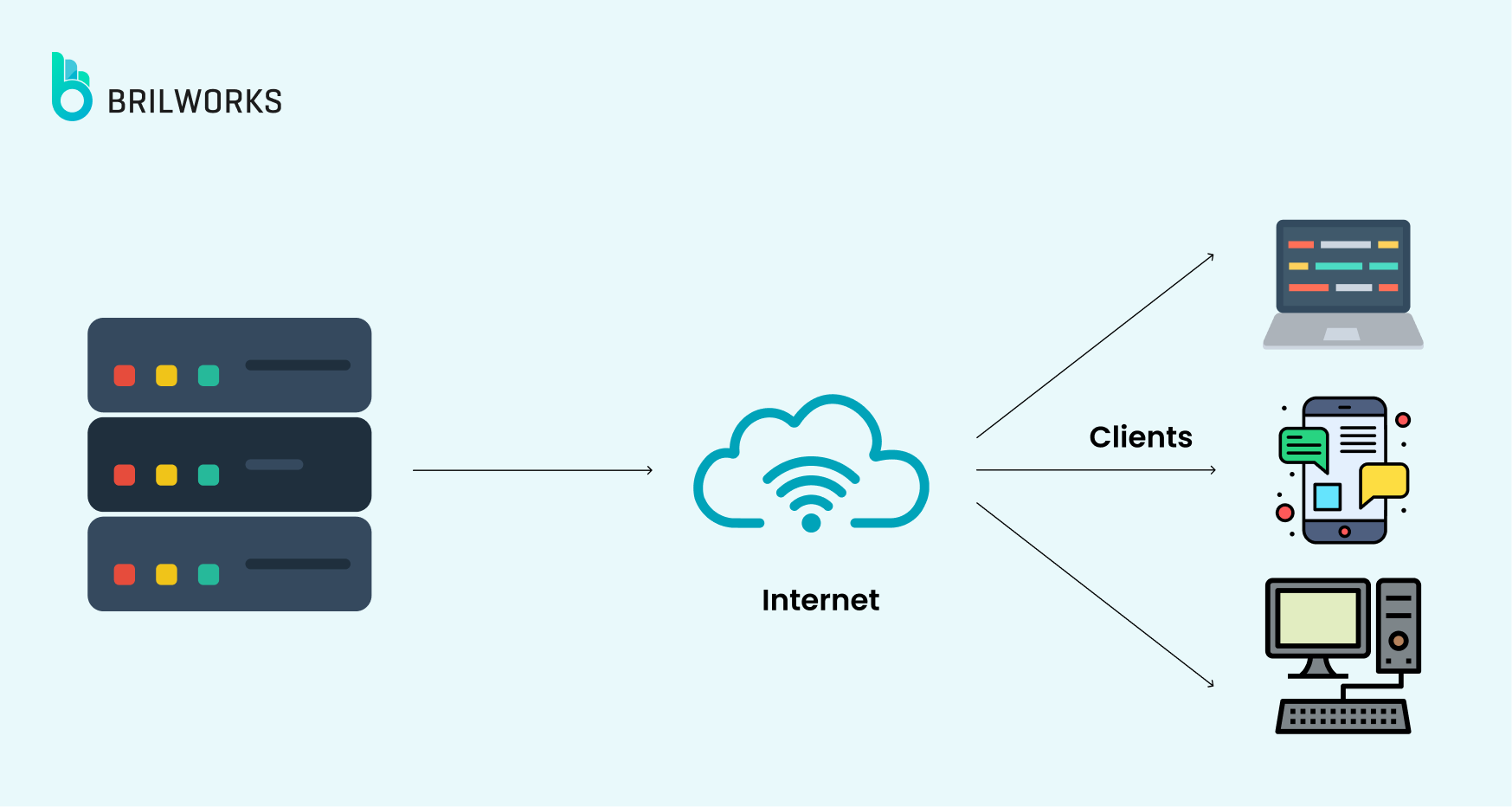
A client-server architecture is a distributed system where clients interact with a centralized server. Clients request specific resources, such as data, files, or services, from the server, and the server processes these requests and sends back the requested information. This architecture is flexible, allowing multiple clients to connect to a single server or a single client to use multiple servers.
The key components are the client and the server. Clients act as interfaces for users to request services from the server, while the server manages and provides these services. The server's functionality is independent of the client, ensuring a standardized and transparent interface for all users.
A common example of a client-server architecture is email. When a user sends or receives an email, they are interacting with an email server. The server stores and manages emails, delivering them to the intended recipients upon request. This architecture enhances user experience by providing efficient and reliable communication.
Most web applications use a client-server model, with the client (web browser) making requests to a server (web server) to retrieve and display content.
Relational databases often follow a client-server architecture, where clients (application programs) connect to a server (database server) to access and manipulate data.
Many network services, such as file sharing, email, and remote login, use a client-server model.
Online games typically use a client-server model, with the server handling game logic and state, while clients (game clients) provide the user interface and input.
Large-scale distributed systems often employ a client-server architecture to manage resources and communication between different components.
Mobile apps frequently interact with servers to retrieve data, authenticate users, and perform other tasks.
Internet of Things (IoT) devices often communicate with servers to send and receive data, update firmware, and receive commands.
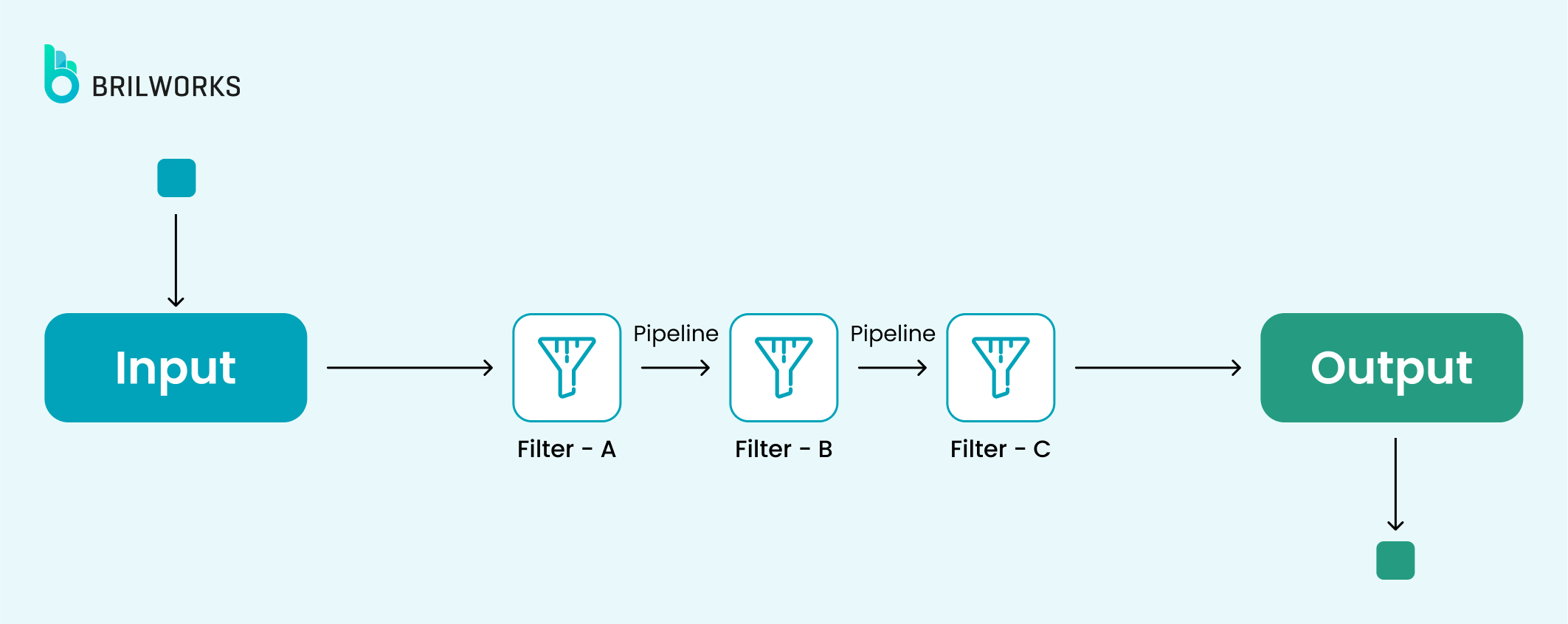
Pipe and Filter is a modular architectural pattern where components, known as filters, process data independently. Each filter receives data, performs specific transformations, and passes the results to the next filter via pipes. This creates a linear data flow, making it efficient for systems that need to transform streams of discrete data.
Filters can be reused in different systems, promoting modularity and maintainability. The data flows through the pipeline, starting at a source, undergoing transformations in each filter, and finally reaching a target. This sequential nature simplifies the overall system design and makes it easier to understand and manage.
It's ideal for processing data through a series of steps, such as filtering, transforming, and aggregating.
Used for tasks like tokenization, stemming, and part-of-speech tagging in natural language processing.
Applied for image manipulation, filtering, and analysis.
Used for audio effects, filtering, and analysis.
Transforming data from one format to another (e.g., CSV to JSON).
Creating automated workflows by chaining together different tasks.
Processing data streams in real-time, such as financial data or sensor readings.
Analyzing large datasets by breaking down the process into smaller, manageable steps.
Building web applications with modular components that handle different parts of the request-response cycle.
Integrating different systems by connecting them through a pipe and filter architecture.
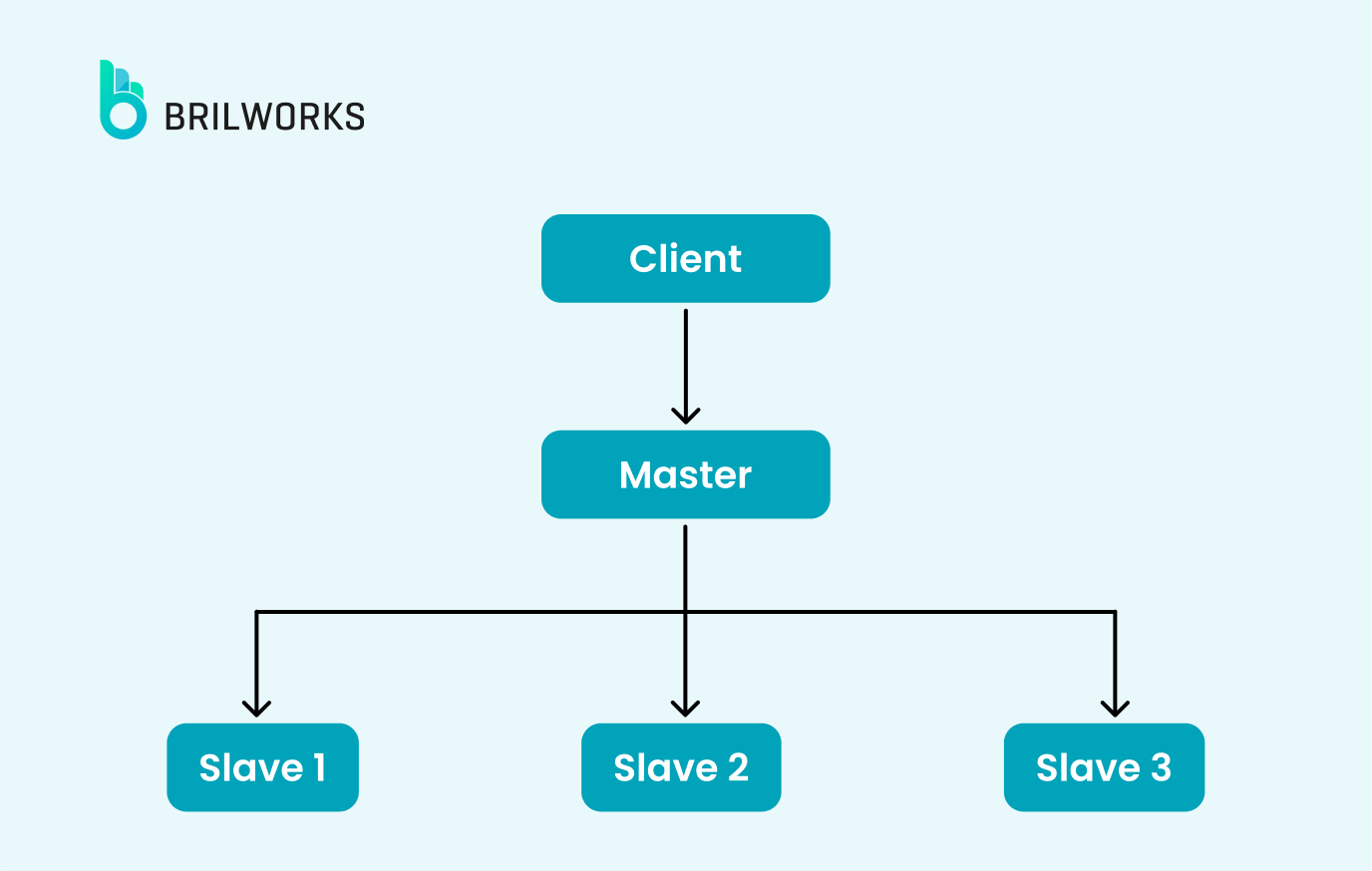
Imagine a database inundated with similar requests. To avoid processing delays, a master-slave architecture is employed. The master distributes tasks among multiple slaves, which execute them concurrently. Once completed, the slaves return results to the master, which compiles them. The master maintains control over the slaves, dictating their communication and priorities. This pattern excels in applications with divisible tasks, such as database systems requiring heavy multitasking.
At Brilworks, we focus on the core architecture patterns – Monolithic, Microservices, Serverless – there's a vast toolbox available to software development. Remember, the key to success lies in choosing the right pattern for your project. A thorough understanding of their functionalities and a skilled software architect on board are crucial for making the optimal selection. Don't let the wrong architecture pattern hinder your progress.
To empower your development team, consider partnering with Brilworks. Our experienced software architects and engineers can identify any gaps in your team's skillset, provide effective training, and pave the way for company growth. Visit our Hire Developers page to learn more and build a future-proof software development team.
While both are blueprints for software development, architecture patterns focus on the high-level structure and organization of the entire system. Design patterns, on the other hand, concentrate on specific solutions to recurring design problems within the system.
Monolithic architectures are simpler to develop and manage, especially for smaller projects. They can also be more efficient in terms of resource utilization.
Yes, it's often possible to combine multiple patterns to address different aspects of your application. For instance, you might use a microservices architecture for core functionality and a layered architecture for specific components.
Get In Touch
Contact us for your software development requirements
Get In Touch
Contact us for your software development requirements